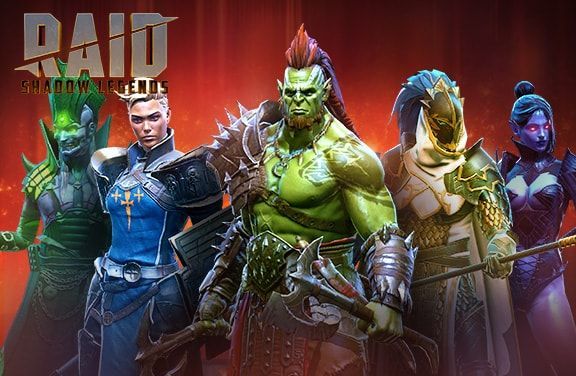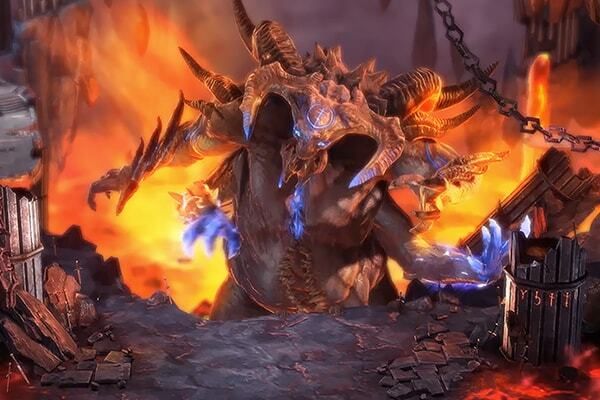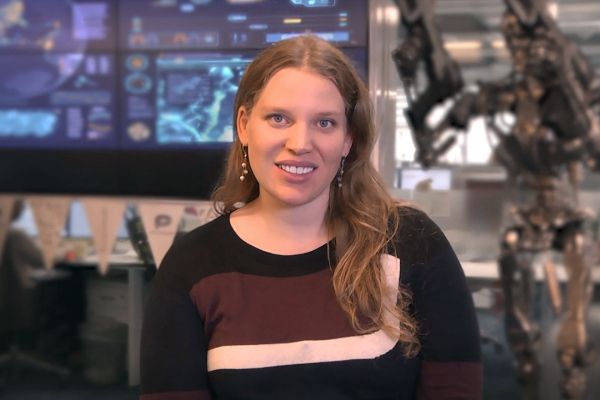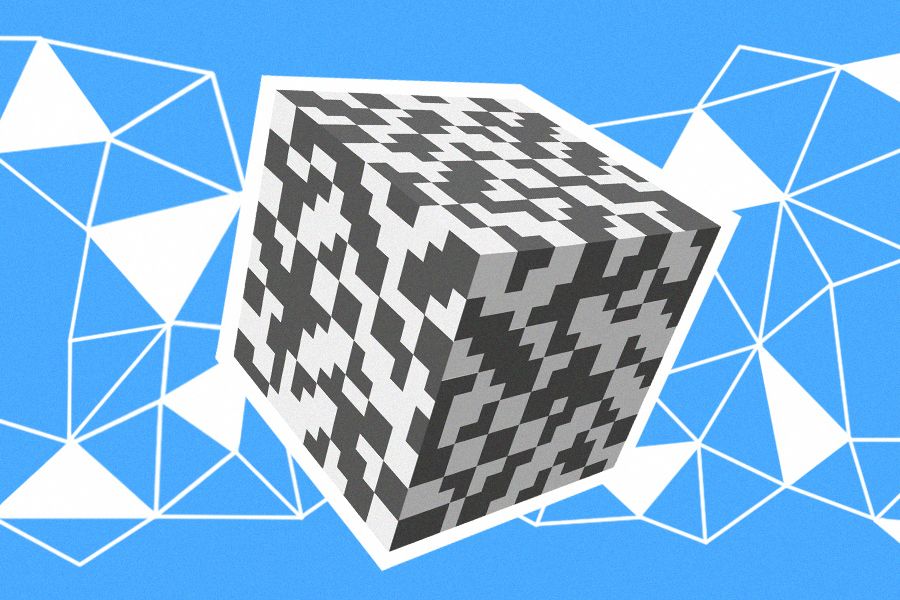Community management for video games (in a nutshell)
This text is a translation of an article originally published on GameDev DOU.
My name is Volodymyr Kramskyi, and I’ve been working as a Community Manager at Plarium Ukraine for 2 years now. In this position, I maintain a productive social atmosphere on official media and establish relationships with unofficial communities.

In this article, we’ll be taking a look at the essentials of community management for video games. Everything we talk about can be applied to all genres of video games, on any medium, and belonging to any method of distribution: desktop or mobile, single-player or MMO, a strategy, or a first-person shooter.
So, why bother with community management at all?
Well, you didn’t necessarily need to in the 1990s or early 2000s. Back then, when you released a game, it would be discussed predominantly offline by small close-knit groups of like-minded individuals: by kids between classes, or buddies at a party, etc. Even where those discussions reached more public spaces like game design conferences, such events were relatively rare, their attendance pretty modest.
Back when games were distributed mainly on hard copies such as CD-ROMs, most negative reception about a particular release would eventually die out before causing too much trouble for a company’s image or its marketing efforts. Of course, general public outrage was still possible, but it took a serious crisis for such discontent to gain momentum.
These days, if your game attracts a player base of any significant size, it’s going to be discussed online: publicly, thoroughly, and ruthlessly, whether you like it or not. From Steam reviews to Discord servers, from forums to Reddit-communities, people who share any interest in your game can and will share their opinion on it.
In the modern era, discontent spreads like wildfire, and it’ll often even be exaggerated in the process. If your game contains a bug – let’s say, a character falls through the level texture, or perhaps some significant exploit is discovered, like an easy way to gain a resource – it may quickly turn into a meme and then go viral. There are so many avenues and methods by which players nowadays can manifest their disapproval. Sometimes, they’ll go beyond circulating an angry meme or two: users can invade app stores and Steam pages to collapse a game’s ratings. Your marketing team’s efforts will thus likely be drowned out by angry reviews.
Furthermore, today’s player audiences are increasingly more tech-savvy, and so they’re attentive to even the smallest flaws in a game’s mechanics, graphics, story, and even audio. The most attentive players can also sometimes be the most influential, due to the long reach of their primary weapon – Youtube videos. Often, these videos take the form of reviews with surprising levels of analytical depth. This degree of ever-increasing attention to detail coupled with the ability to effectively share observations is a formidable combination you don’t want your game to be on the wrong side of.
While you can still develop and sell a game in the 21st century without keeping in touch with your player community, not engaging with them puts you and your game at risk. It also denies you a great deal of considerable benefits.
What exactly are these risks and benefits? We’ll get to that shortly.
What does community management involve?
Before we go to explore that question in detail, a quick clarification of the basics: community management is a complex set of interactions between the developer team and players in public areas. Unlike PR and advertisement, community management interactions are much more bilateral and may be divided into two types: reactive and active. Let’s take a closer look at both.
Reactive Level of Community Management
The reactive level of community management is all about, as the name suggests, reacting to the community. In this day and age, the impact of public discussions around a game might prove crucial to its marketing success. Thus, when players manifest their opinion, you want to be there to react promptly with the following actions:
Smooth over and clarify
There is always a chance your player base will misinterpret elements of your game’s design, art, or story, or maybe they miss some important message you intended the game to convey. In that case, it’s important to steer the audience’s attention in your desired direction.
Eliminate bugs swiftly
In case some bugs sneak their way through to release and get noticed by players, you should try your hardest to eliminate them before their notoriety puts off any of your real or prospective audiences.
Imagine there’s a visual bug in your game that occurs in a particular location. Even though it doesn’t affect gameplay and might be experienced only by a small minority of players, the very knowledge about the bug’s existence can reach a much wider audience, who may then assume the game is of a generally low quality. Consider, as we’ve already discussed, that bugs often go public via jokes and memes.
If you have to delay fixing a certain bug, it’s a good idea to acknowledge its existence and inform your community about the upcoming fix. This way you can mitigate the bug’s detrimental impact on your reputation and the reception of the game, while building player trust.
Adapt quickly to the ever-changing world of games
The game development life-cycle includes much more than simply delivering bug fixes. If players begin to express resentment about some of your decisions, or make claims that your game lacks some essential features present in other, similar games, you may want to meet those demands.
For example, players of your open-world RPG might ask for a convenient method of organizing their inventory that they’ve seen in other games of a similar genre. By implementing it, not only would you make the play experience better, but you’d also be showing how willing you are to listen to your community.
However, you do not necessarily need to implement that change if it contradicts your game design philosophy. In this case, make sure you communicate the reasons behind your design, and ultimately, why you won’t be following through on their request – maybe careful manual inventory management is intended to be an integral or even key dimension of gameplay (see point 1 – to “smooth over and clarify”).
Absorb new ideas
Do not underestimate the creativity of your players. Among your audience, you may find truly devoted fans with a solid understanding of game design principles. Keep in mind that good game designers are usually avid players too, and may provide you with great ideas for your project – if you are inclined to listen. They may offer you great ideas, and what’s more, those ideas would be free!
Active Level of Community Management
Community management does not stop at reacting to negative feedback. At its active level, community management should take the initiative to encourage a positive social atmosphere that simultaneously helps players discover and enjoy the game’s content. Empower your community with tools, routines, and communication channels that assist users to fulfill their needs in a sociable, constructive fashion.
In other words, try to shape the structure of your community. Before delving into what it takes to do that, let’s take a look at the reasons for doing so in the first place.
Why is it so important to structure a community?
Well-structured communities help players discover new content in your game
Developing game content involves considerable expenses and effort, so naturally, you’ll want this content to be encountered by as broad a player audience as possible. Suppose you want your players to explore a dungeon somewhere on the fringes of the map in your open-world RPG, or you want them to use some particular, rare weapon in your shooter game. In that case, there are few ways to better intrigue players about this content than through a lively community.
Well-structured communities are a great source of in-depth information
Not only will your community discover content, they will also help you – and other players – to understand it better. If some aspects of your game are even moderately sophisticated, you would want your community to be able to assist new players with advice and guidance. Bear in mind that becoming overwhelmed and/or confused is among the frequent reasons new players quit games. On the other hand, some players may overcome initial challenges, but then struggle to progress because they missed some underlying principle.
If seasoned players in your community feel encouraged to help their less experienced fellow players understand the game better, the community may act as a kind of substitute for the game tutorial to a certain degree. This is especially useful if you want to aid your players’ progression but do not want to give away any core gameplay nuances too easily. Doing that may make progression become trivial and turn hardcore gameplay into a casual experience.
It’s better to think of this community tutorial function as an addition to or a continuation of the game tutorial, not as its complete replacement. Nonetheless, it can be a very useful resource.
Positive social experiences bolster player retention
The more helpful the gaming community is to players, the more likely they are to stick with both the community and the game itself. Bonds developed between individuals and the feeling of shared identity via a common interest may itself serve as an important factor in a player's decision not to abandon the game, even if they have all but exhausted the game’s content.
Conversely, some will quickly lose interest in the game when they encounter an accompanying community that is toxic or unpleasant to engage with. Of course, a great community structure is unlikely to fully compensate for underwhelming game design, but a nasty community may repel players from even the most well-constructed, fun-to-play titles.
Well-thought-out community structure encourages positive feedback
As a rule of thumb, bad community structure breeds bad community mood. The simple truth is that superficial and harsh criticism of a game is easy, while comprehensive and constructive analysis is hard.
In a haphazard community, spreading discontent is perhaps the only type of behavior accessible to users (and oftentimes it’s the only type that’s acceptable in a poorly structured community). That’s exactly the kind of commentary that, as we mentioned previously, tends to snowball really quickly, damaging your reputation and that of your game in the process.
There is always a chance that some game reviewer might make a Youtube video or write an article praising the brilliance of your game. That piece may even go viral, ultimately placing your game into some game industry ‘Hall of Fame’.
However, even exceptionally well-designed games may never be fully appreciated by a wide audience. But this can be counteracted. Don't rely too much on the slim chance of sudden appraisal; instead, focus on building a civil, approachable community well-suited to facilitating the spread of positive or at least constructive feedback about your game.
Steps of Active Community Management
Now we’ve considered the reasons for structuring communities, let’s take a step-by-step through the process of building a gaming community structure, i.e. active approach to community management.
Step 1. Research your community
Before taking any action, it’s always advisable to research your community. Only by knowing your audience may you come to understand its needs. You can start your research by asking the following questions:
- What is the general profile of a user in your community? What are their ages, interests, and preferences? Keep in mind that the average profile of a user in a community might differ significantly from that of your average player, as not all players get attracted to public spaces.
- Is the general profile homogeneous or diverse?
- Can any sub-groups be traced? If so, what separates them? Is this rift reflective of their differing views, demographics, or progress through the game (newbies, experienced players, veterans, etc.)?
- What makes players join your community?
- What makes them leave?
Of course, depending on your specific goals, you may ask some additional or even totally different questions. Remember, however, that as your game evolves through different stages of development, so does your community. It’s therefore important that your research is an ongoing process that isn’t limited to the early stages of the community’s (or the game’s) lifespan.
Step 2: Establish efficient communication routines with other Departments
An essential prerequisite to breach the gap between purely reactive and active community management is to maintain close contact with the production team, and to remain fully aware of how it’s developing. This may sound trivial, but such awareness is instrumental in helping you to:
- Foresee processes that may unfold within the community. Remember, to grow from reactive to active mode, you must always be one step ahead of your players.
- Mitigate, in advance, negative perceptions regarding potentially unpopular changes in the game. Often, a proper explanation is all that’s necessary.
- Capitalize on popular or long-anticipated features. Make sure the community doesn’t miss the new features it’s been waiting for.
- Warn the development team about an anticipated backlash from the community. No one is as well-versed in the players’ ethos and mentality as the community manager who communicates with players on a daily basis.
Step 3. Establish rules for civil communication within the community
Enforcing rules may sound very restrictive and imposing, but remember that those rules serve not to push the community into submission, but to help free its full creative and productive potential (and, of course, to make it an approachable and fun place to be).
An unruly social environment often discourages people from being creative and productive in a way that benefits others, because such an environment lacks the effective means of commending such behavior. In those circumstances, even a trivial task such as asking for advice about a difficult part of the game might prove challenging for a player. Instead of helping the newbie, the unruly community is inclined to troll them, poke fun at inaccuracies in the question, or give ironic, misleading, even intentionally detrimental advice.
That’s why it is really important to establish clear rules prohibiting any sort of hostile communication. Then, put people in charge who would enforce those rules. It’s not unreasonable to do so in any fractured community you preside over. If there’s a community you don’t have any formal sway over, you can contact their leaders (administrators, moderators, etc.) and discuss whether such norms can be established there as well.
Step 4. Create channels for productive interaction within the community
While the steps mentioned above aim at developing a positive and respectful social environment, the following two steps are concerned with making this environment not merely comfortable, but also useful both for players and developers.
Players don’t join an online community simply for some vague desire to chat with other people who play the same game. More often than not, a player goes to the community for at least one of the following reasons:
- the player believes the community may help them to find out something that they’re struggling to figure out on their own. In other words, they seek information and guidance
- the player believes they can contribute something to the community that it would appreciate. In other words, they seek recognition
For an example of guidance needs, think about a newbie asking for the best way to battle through challenging stages of a hardcore RPG. Those games often require players to navigate a complex world governed by stats, skills, equipment, and other game mechanics. It might take a lot of meticulous trial and error before the desired solution arises. For a beginner, it’s much easier simply to ask for advice from the game’s hardened vets.
As for the recognition, think about an artist willing to share their game-themed artwork. It is difficult to think about any social group better suited to the appreciation of this artist’s efforts than the community of people who share an interest in the same broad subject (i.e., the game itself).
You just need to establish public spaces and practices where such an exchange of information is encouraged. For example, regular posts for discussions on social media, specific channels on your Discord server, etc.
Don’t forget to celebrate those who are especially helpful to their fellow players. You may even take one step further and arrange community activities like contests with rewards for the best in-game guides, pieces of art, and so on.
Step 5: Encourage positive leadership to flourish
Just as with any real-life offline society, online communities of gamers tend to come up with structures and even leaders amongst themselves. However, unless you encourage the promotion to leadership positions of people contributing to the community, you run the risk of people primarily eager for power and influence wrestling authority by force.
The quality of leadership in a community affects nearly all aspects of its management, but the primary consequences of deteriorating or fraught leadership are:
- frequent outbreaks of discontent and its rapid spread
- diminishing control over processes unfolding in the community
Keep in mind that community leaders (be they streamers, Youtube content creators, or chat moderators) create social patterns that rank-and-file members will likely replicate. If leaders of your community are constantly complaining about your game, that is what other players are going to do as well.
That reciprocation between leader and members reveals the fundamental principle of leadership building: promote to leadership positions those individuals whose behavior you want the players to reproduce. If you want your players to be good at solving puzzles in your game, bring to prominence those who do this better than others, and, preferably, in an entertaining way. If your game is all about developing efficient management techniques, as is the case in many strategy games, spotlight those with the most inventive approaches. If you want your players to pay closer attention to the story and lore, encourage those who are eager to discuss those subjects.
How you promote such people in your community is completely up to you, and it’ll depend on the practical or technical methods available to you – i.e., promotion of their videos or other materials, special bragging rights (profile badges, avatars), etc.
Once you’ve promoted these individuals to leadership positions, give them tools and privileges that enhance their ability to influence the community, like the power to organize events on their own or the instruments necessary to effectively combat trolls and spammers.
Speaking of leadership: while imposing a certain structure and sets of rules on your community, remember that people come to your community voluntarily. Therefore, expect and respect a certain degree of autonomy on their part. Ideally, some balance and dialogue should be established between the top-bottom structuring effort and the initiative of rank-and-file users.
Conclusion
If your game attracts a player base of any significance, players will organize themselves into public communities, whether you want them to or not. However, the more involved you are in the process, the more opportunities you’ll have to leverage the power and resources of those public spaces, whether that involves simply harvesting feedback, or utilizing their publicity to further your ideas and vision.
At the very least, you’ll be supporting the marketing of your game. However, if you do it in a way that works for your game and your community, you’ll also provide your players with a reason for long-term interest and engagement.



